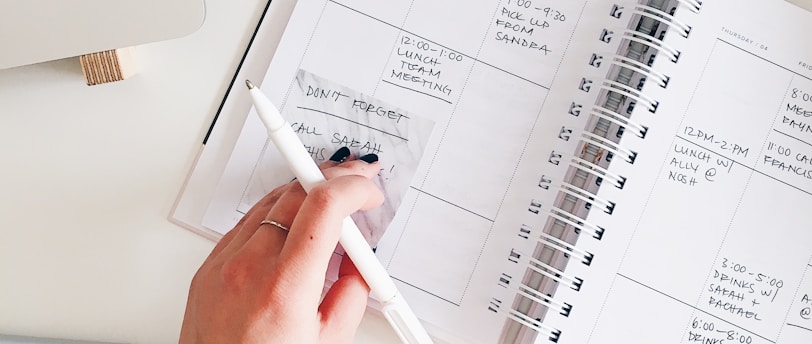How To Safety Plan For When You Are In Crisis
A step-by-step guide for creating a crisis or safety plan, with an interactive module.
MENTAL HEALTH TOOLSANXIETY


What Is A Crisis Plan?
A crisis or safety plan is a structured and personalized document or strategy designed to help individuals cope with and manage mental health crises, suicidal thoughts, or emotional distress. It outlines specific steps and resources to turn to when someone is in crisis to ensure their safety and well-being. It is typically developed in collaboration with mental health professionals, but anyone can create their own with the guidance of trusted individuals. A well-thought-out safety plan can be a crucial tool in preventing self-harm or suicide and in managing difficult emotions and situations.
Step By Step Guide
Creating a safety plan for times of crisis is an important step in managing your well-being and ensuring you have support when you need it most. below is a step-by-step guide to help you create a safety plan.
1. Self-assessment: "What are signs I am in crisis?"
- Reflect on the situations or triggers that typically lead to a crisis for you. These could be emotional, relational, or situational factors.
- Identify the warning signs that indicate you're heading toward a crisis. These signs could be physical, emotional, or behavioral.
2. Coping strategies:
List coping strategies that have helped you in the past or that you believe might be effective during a crisis. These could include breathing exercises, mindfulness techniques, journaling, or engaging in a hobby. Detail step-by-step instructions for these strategies, making them easy to follow when needed.
Create a list of positive affirmations or calming statements that resonate with you. These can help shift your mindset during a crisis. Keep these statements on hand or memorize them for quick access.
3. Distraction activities: " Activities I can do to distract myself..."
Identify activities that can help distract you from distressing thoughts or emotions. These might include watching a favorite movie, listening to music, reading a book, or going for a walk. Make a list of these activities along with any necessary materials.
4. Identify your support network: "Who can I reach out to for help or distraction when I feel this way...?"
List the people you can trust and reach out to in times of crisis. Include family members, friends, colleagues, therapists, or support groups.
Include contact information for these individuals, such as phone numbers and email addresses.
5. Safe spaces: "Places I can go to help me feel better are..."
Identify safe places you can go to during a crisis. These could be a friend's house, a family member's home, a park, or a community center.
Include addresses and directions to these places in your plan.
7. Emergency contacts: "Professionals I can reach out to for help or if no one is around..."
List emergency contacts such as your local crisis hotline, suicide prevention hotline, or emergency services. Include their phone numbers and addresses.
List the mental health professionals or crisis hotlines you can contact for help. Include their contact information. Make sure you have access to your therapist or counselor's contact information, and establish a crisis contact plan with them.
8. Keeping My Environment Safe ( If considering self-harm): " When I feel like hurting myself, how can I restrict my access to things that can harm me
Think about the means you would consider during a suicidal crisis,( i.e firearm, pills, knife, rope, etc).
Develop a plan to limit your access to these means. For example, giving someone you trust your pills so they can monitor them for you. Removing firearms or other dangerous items that you have considered from the house or telling your contacts to do them for you. Placing the knife under the bed, behind the couch, or any hard-to-reach areas.
9. Reasons to live ( If suicidal): " Who and what are my reasons to keep on going...?"
Thinking about the reasons to live reminds us that there are things worth fighting for, there is still hope, and that underneath all that pain is the desire to truly live. Think about the people in your life that may be sad to see you go. Or the goals that you want to accomplish. Who are you hanging on for?
Optional: Medication and medical information
If you're on medication, list the medications you take, their dosages, and the prescribing doctor's information.
Include any allergies or medical conditions that emergency responders should be aware of.
Best Pactices For Creating Your Plan
Here are some best practices when creating your safety plan.
1. Document your plan: Write down your safety plan in a clear and organized manner. Consider using a template or creating a digital document. Review and update your plan regularly to ensure it reflects your current needs and resources.
2. Share your plan: Share your safety plan with trusted individuals in your support network. This ensures they are aware of how to assist you during a crisis.
3. Prevention > Cure: Prioritize self-care practices in your daily routine to help prevent crises. This can include maintaining a healthy lifestyle, getting enough sleep, and managing stress.
4. Develop a Communication Plan: Decide how you will communicate with your support network during a crisis. This might include texting, calling, or using a specific code word. Establish a signal or phrase that lets them know you need help without explicitly saying it.
5. Crisis De-escalation Techniques: Learn and practice self-soothing techniques for managing overwhelming emotions. This could include grounding exercises, progressive muscle relaxation, or visualizations.
6. Review and Update Regularly: A safety plan should be a living document that you review and update periodically, especially when circumstances or triggers change. - Regularly check in with your support network to ensure they are aware of your plan and can offer assistance when needed.
7. Seek Professional Help: If you're not already in treatment, consider seeking professional help from a therapist, counselor, or psychiatrist. - Share your safety plan with your mental health provider and collaborate on making it more effective.
8. Its okay to not be okay. Be kind to yourself: Remember that it's okay to struggle, and seeking help and following your safety plan is a sign of strength, not weakness. - Be kind to yourself and acknowledge your progress in managing crises.
10.Avoid listening to sad music if doing so makes you ruminate more and feel worse: Music can be a great source of relief when we are sad or in crisis, however, in some cases, it may trigger unhelpful memories, thoughts, and emotions.
Remember that a safety plan is a dynamic document that can evolve as your needs change. It's crucial to revisit and revise your plan periodically to ensure it remains effective in supporting your well-being during times of crisis. Seek professional guidance in creating and refining your safety plan, especially if you are managing a mental health condition.
